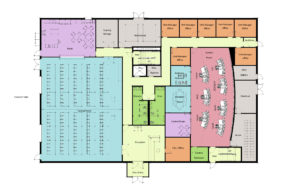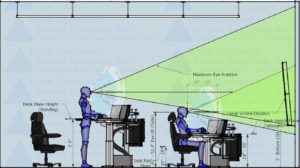Is it time to invest in your control room design and control buildings, but you're not sure where to begin?
Many companies are moving to new, consolidated, centralized control room design, but this can be an expensive, multi-year commitment. One alternative may be to reuse the existing control rooms by undertaking extensive refitting. However, this will almost certainly lead to compromise, and the cost may be close to that of a new building. So, how do you decide the manner in which to proceed?
UCDS can help in the decision process by leveraging our experience, which incorporates our participation in over 100 control room projects across multiple industry sectors around the world.
Our Approach
-
Developing a shared vision by defining the needs and requirements of your organization
- Requirements of both primary and secondary users
-
The suitability, number, and style of control room(s)
-
Console arrangements and adjacencies
-
Identifying areas to improve the operator’s ability to detect, diagnose, and respond to abnormal situations, including:
-
-
Console Furniture
-
Ergonomics
-
HVAC
-
Lighting
-
Acoustics
-
Noise Control
-
Traffic Flow
-
Human factors are critical for all Control Room projects. Per the EEMUA 201, it’s important to use a Human Factors Integration Plan (HFIP) it provides the mechanism to manage human factors throughout the project. It identifies the potential human factors issues and opportunities associated with the project. The plan is generated at the start of the project using a systematic approach that is reviewed and updated as the project progresses.
The plan is structured around each project phase. It's used to identify the activities that need to be performed in order to integrate human factors into the project. The plan is generated during phase one, conceptual design. At this stage it will include an introduction, project scope, and purpose of the HFIP. As each phase develops, additional information will be added so that decisions made by the project team about the Control Building and Control Room have a sound human factors basis.
All decisions related to human factors should be based on reliable data. However, in practice design decisions often need to be made early in projects when this is not available. In these cases assumptions and estimates have to be made, otherwise the design may progress without any human factors input. Where assumptions and estimates are used, this will be clearly indicated in the plan along with how they were determined. As more reliable data becomes available the assumptions will be reviewed and the plan updated. Situations where the assumptions do not match the data are highlighted to the project team. Actions arising from the HFIP are incorporated into an appropriate action tracking system, which is used to manage execution and closure.
Service Description
A team of UCDS personnel will perform a site visit to evaluate your existing control room(s). We conduct extensive interviews with representatives of the departments involved in the management, implementation, use, and maintenance of the control room(s). These interviews range from senior management to plant operators.
Following the site visit, we generate a report detailing the current state of the control room(s), along with identifying specific gaps versus Best Practices. The report will contain a full analysis of the results of the interviews, along with recommendations for dozens of areas to be considered during the project.
*Our architect is licensed in Texas, Colorado, and Utah.
For additional information, or to book a site visit, please e-mail us at: sales@mycontrolroom.com


Schedule Consultation
Simply fill out the form and we will be in contact with you shortly to schedule a phone or web conference to answer questions and discuss how we can help your organization.


